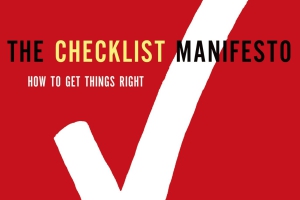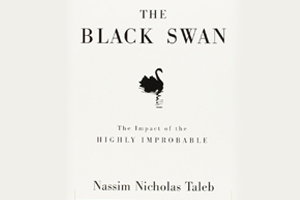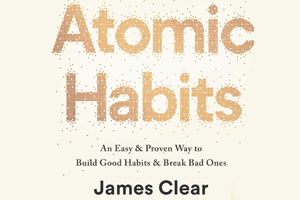Author: J.L. Collins
Have you been trying to achieve the elusive goal that everyone aspires towards – financial independence? If yes, then you are well aware of the many struggles along the way – from trying to save enough money to deciding where to invest and how much to set aside for your future nest egg, attaining financial freedom is easier said than done. However, the countless number of people who have already achieved this elusive goal make us believe that it is not impossible – as long as you have the right blueprint to guide your way, and a mentor who knows exactly how to make this dream a reality. If you have been struggling to achieve the goal of financial freedom, then J.L. Collins’ treatise, The Simple Path to Wealth, is the right fit for you.
Written as a series of letters to his teenage daughter, from the desk of a wealthy man, The Simple Path to Wealth offers you a simple, three-step template to achieve optimal financial freedom. The author, J.L. Collins, is widely recognized as the influential mind behind The Simple Path to Wealth, a renowned guide to achieving financial independence and leading a fulfilling life of freedom. Within the financial independence sphere, he is affectionately referred to as "The Godfather of FI". Since the launch of his blog, jlcollinsnh.com, in June 2011, Collins has garnered a significant following, with his talk at Google amassing over 1.4 million views. He has also been a featured guest on numerous prominent finance shows and podcasts, further solidifying his reputation as a leading voice in personal finance and wealth management.
Collins’ book will not be just another addition to your shelf – rather, it is a blueprint for breaking free from the shackles of financial insecurity. He demystifies the complexities of money management, offering clear, actionable advice that empowers you to take control of your financial future. Whether you are grappling with debt, striving to build wealth, or simply seeking peace of mind, this book equips you with the tools and knowledge to pave your own path to prosperity. With Collins as your trusted mentor, achieving financial freedom becomes not just a lofty ambition, but an attainable reality waiting to be seized.
Key takeaways
Top of Form
- Mastering money transforms it from a tyrant to a servant, making it vital to grasp its intricacies for financial success
- Avoid elaborate investments which often benefit creators more than investors; simplicity wins in financial strategy
- Spend less than you earn, invest the surplus, and shun debt—key principles for securing financial freedom
- Money purchases invaluable freedom, emphasizing the importance of prioritizing financial independence over materialism.
- Cease fretting over uncertain outcomes, instead focus on what is within your control to enhance your life
- Reject the societal normalization of debt – it is a hindrance, not a steppingstone, to financial prosperity
- Understanding stocks as ownership stakes in companies underscores the significance of the stock market in wealth building
Ask anyone who suffers from improper financial planning and they will enumerate the imperative nature of financial freedom in a happy life. Whatever your deepest desires and dreams may be, it is attaining financial freedom which will make it possible for you to attain your dreams and therefore, financial freedom becomes the imperative stepping stone to a satisfying and fulfilling life. While the desire to attain financial freedom will be found within every sentient being, the path to the same is often shrouded in mystery but with J.L. Collins’ template, you can start your journey towards attaining optimal financial freedom and therefore, leading a full and enjoyable life.
The opening parable
In the opening parable, we are introduced to two childhood friends who take divergent paths in life – one becomes a powerful advisor to the king while the other chooses the humble life of a monk. When they reunite, the minister suggests to the monk that he could live a more comfortable life if he served the king. However, the monk counters, suggesting that if the minister learned to live contently with simplicity, he would not need to serve the king for material comforts. This parable is employed to underscore a fundamental truth: true wealth is not measured in power, luxury, or worldly possessions, but in freedom. Central to the philosophy of the book is the idea that financial independence affords you an opportunity to live life on your own terms. Throughout the book, we receive a clear and direct roadmap to achieve this freedom, with a consistent emphasis on the importance of simple living and wise financial planning.
The path to financial freedom
Charting a course to financial independence unveils the liberating concept of being able to overlook money — a nest egg empowering autonomy and choice. This journey demands a shift in your financial mindset, viewing money not as fleeting pleasure but as diligent workers in the realm of investments, laying the groundwork for wealth accumulation through compounded growth. Every expenditure incurs an opportunity cost, a sacrifice of future potential – while luxuries may provide instant gratification, yet they deplete the wealth that could have multiplied through wise investment. Venturing into investments transcends mere numbers; it entails becoming a stakeholder in the success stories of companies, weathering market turbulence with steadfast resilience. The stock market, akin to a tempestuous sea, witnesses fluctuating tides of prices, where attempts to time market swings prove futile – after all, market upheavals are natural rhythms, and can only be overcome by those who stay invested with unwavering resolve, navigating through fear and impulsive decisions with patience as their guiding star. In this voyage to financial liberation, each decision steers us closer to or farther from our destination. By cultivating a disciplined approach to finances, we harness the power to unlock the chains of debt and seize control of our lives' trajectories. Embrace the journey, for within its tumult lie the winds of opportunity, guiding us towards the shores of financial freedom.
Spend less that you earn
The first step to financial freedom is extremely simple and clear – always ensure that your spending remains below your earnings. This point is illustrated by citing the cautionary tale of Mike Tyson, a boxing legend who squandered a colossal fortune despite earning over USD 300 million. Indeed, many individuals, despite earning well, find themselves shackled by their possessions, akin to wearing "golden handcuffs." Your belongings demand both mental and financial upkeep, ultimately encumbering your freedom. While the book does not delve deeply into traditional budgeting tactics or minor financial adjustments, it chooses to appeal to your innate sense of logic. By simply comparing income to expenses, you can ascertain your financial standing and understand that building wealth hinges on maintaining a positive gap between these two figures. The virtues of a high savings rate are many, and the practice yields dual benefits; fostering a disciplined lifestyle of frugality while simultaneously bolstering investment opportunities. As an individual, you must eschew extravagance, opting for financial freedom over indulgence. Emulating a robust savings rate of 50%, which is much higher than the usual 50:30:20 rule, can help you attain financial independence. Therefore, it is important to consistently spend less than you earn, especially once income surpasses basic needs.
Choose to be debt-free
The second step emphasises the importance of liberating yourself from debt as swiftly as possible and maintaining a debt-free status. While opinions on debt vary, the road to financial freedom aligns with those who advocate for minimising or eliminating it entirely. Carrying debt is akin to being covered in leeches – just like leeches suck out your blood, debt has a draining effect on your financial well-being. If you are keen on attaining financial freedom then you must prioritise clearing your debts promptly, as doing so unlocks surplus funds that can be channeled into investments, fostering the growth of wealth. You must have heard of the notion of "good debt," typically associated with loans for business ventures, education, or mortgages. However, even in such situations, it is advisable to proceed with caution, because while business loans demand careful management, student loans often inflate educational costs and can lead to career compromises. Regarding mortgages, it is advisable to avoid overextending oneself. You should choose to purchase a home based on your necessity rather than your maximum affordability to avoid long-term financial strain. Whether already debt-free or striving to achieve it, it is preferable and advisable to maintain this status to pave the way for financial growth and security.
Invest savings in index funds
Repeated often for good reason, the mantra of index funds echoes throughout the narrative on financial freedom – index funds stand as a cornerstone in the wealth-building strategies of many financial experts, and their efficacy have been proven by many a proponent. Both index funds, which invest in top benchmarks, and their exchange traded fund counterparts, serve as a feasible vehicle for tracking the larger stock market. During the wealth accumulation phase, it is advisable to allocate 100% of investments to such funds, which offer diversification through a single source. Further, while undertaking such an investment, begin with an aim of amassing a nest egg 25 times your annual expenses, to attain optimal financial freedom. Such a fund can also help overcome the psychological challenges you might face, particularly during market downturns when panic reigns. In such scenarios, it is important to remain steadfast, as history attests to the market's resilience in favouring those with a long-term perspective. Upon reaching the portfolio goal, you can begin withdrawing 3-7% annually, while still allowing for asset growth, thus maintaining financial freedom till the very end.
As you can see, the pathway to financial freedom is not as difficult as it seems – as long as you decide that it is your goal, and commit to it fully, J.L. Collins’ simple and easy roadmap will stand you in good stead, acting as your guide and mentor on this fulfilling journey.
One of the main tenets of financial freedom is the ability to build a diversified portfolio that can help you achieve your financial goals and minimise the use of debt. In that context, mutual funds can be a compelling investment option – these are investment vehicles that invest across asset classes and strategies, enabling you to invest in actively managed funds in debt and equity and passively managed funds like index funds and ETFs. Further, you can easily do this via a Systematic Investment Plan (SIP) that will allow you to periodically invest a fixed amount of money in a mutual fund scheme of your choice, thereby enabling discipline and allowing you to take advantage of rupee cost averaging and compounding. While the first step to financial freedom is to start your investment journey, the more important step is to stay committed to this journey. SIP in mutual funds can help you do the same.
An investor education initiative by Edelweiss Mutual Fund.
All Mutual Fund Investors have to go through a onetime KYC process. Investor should deal only with Registered Mutual Fund (RMF). For more info on KYC, RMF and procedure to lodge/redress any complaints – please visit on https://www.edelweissmf.com/kyc-norms
MUTUAL FUND INVESTMENTS ARE SUBJECT TO MARKET RISKS, READ ALL SCHEME RELATED DOCUMENTS CAREFULLY.
Trending Books
MUTUAL FUND INVESTMENTS ARE SUBJECT TO MARKET RISKS, READ ALL SCHEME RELATED DOCUMENTS CAREFULLY.













